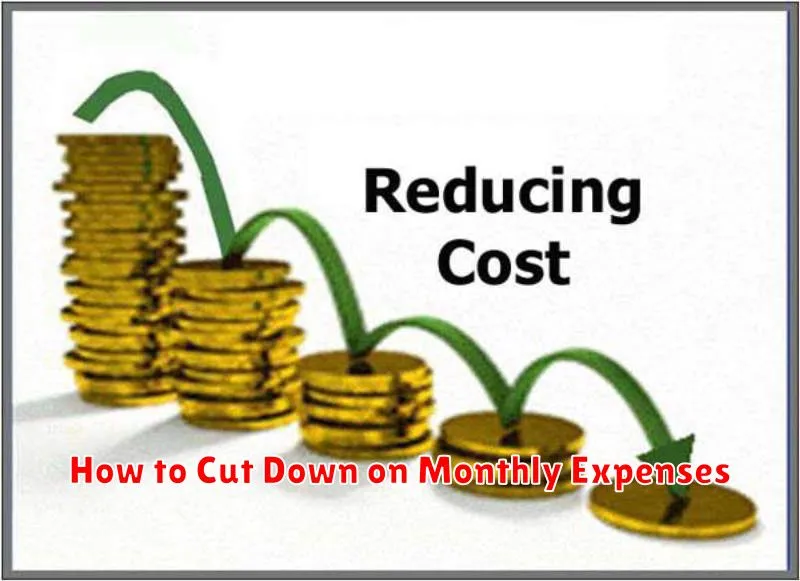Are you looking for smart ways to save money and significantly increase your wealth? This article explores practical strategies to help you boost your savings, improve your financial health, and build lasting wealth. We will delve into proven techniques for budgeting, investing, and managing your finances effectively, empowering you to take control of your financial future and achieve your financial goals.
Understanding the Importance of Saving

Saving money is a fundamental pillar of financial well-being. It provides a safety net for unexpected expenses, such as medical bills or car repairs, preventing you from falling into debt.
Furthermore, saving allows you to achieve your long-term financial goals. Whether it’s buying a house, funding your children’s education, or securing a comfortable retirement, consistent saving is crucial for accumulating the necessary funds.
Compound interest, the interest earned on both principal and accumulated interest, is a powerful tool that significantly accelerates wealth accumulation over time. The earlier you start saving, the more time your money has to grow exponentially.
Beyond material benefits, saving fosters financial discipline and independence. It encourages mindful spending habits and reduces reliance on debt, creating a sense of security and control over your financial future.
Best Budgeting Techniques for Effective Saving
Effective saving starts with a solid budget. The 50/30/20 rule is a popular starting point, allocating 50% of your income to needs (housing, food, utilities), 30% to wants (entertainment, dining out), and 20% to savings and debt repayment. This provides a simple framework for managing your finances.
Zero-based budgeting involves meticulously allocating every dollar of your income to a specific category, ensuring your income equals your expenses. This method promotes mindful spending and helps identify areas for potential savings.
Envelope budgeting is a cash-based system where you allocate cash to different spending categories in labeled envelopes. Once the cash is gone, that category’s spending is finished for the period. This provides a visual and tangible representation of your budget.
Tracking your expenses using budgeting apps or spreadsheets is crucial. Analyzing your spending habits reveals areas where you can cut back and optimize your budget. This provides valuable insights into your financial behavior.
Setting realistic financial goals is vital for staying motivated. Whether it’s saving for a down payment, retirement, or a vacation, having clear goals makes budgeting more meaningful and easier to maintain.
Remember, consistency is key. Regularly reviewing and adjusting your budget based on your financial situation will ensure its long-term effectiveness in building your wealth.
How to Cut Down on Monthly Expenses

Reducing monthly expenses is crucial for building wealth. Start by meticulously tracking your spending for a month to identify areas of overspending. Categorize your expenses (housing, transportation, food, entertainment, etc.) to pinpoint where your money is going.
Lower your housing costs if possible. This might involve downsizing, renegotiating your rent, or finding cheaper utilities. Reduce transportation expenses by carpooling, using public transport, biking, or walking more often. Consider selling a car if feasible.
Optimize your food budget by meal planning, cooking at home more often, reducing eating out, and utilizing coupons or discount grocery apps. Cut entertainment costs by exploring free or low-cost activities, such as parks, libraries, and community events. Review subscriptions and cancel any you don’t use regularly.
Negotiate lower bills with your service providers (internet, phone, insurance). Often, simply asking for a better rate can yield savings. Automate savings by setting up automatic transfers to a savings or investment account each month. Even small amounts add up significantly over time.
Embrace mindful spending. Before making a purchase, ask yourself if it’s necessary or a want. Avoid impulse buys and prioritize needs over wants. Regularly reviewing your budget and adjusting as needed ensures you stay on track toward your financial goals.
High-Interest Savings Accounts vs Investment Accounts
High-interest savings accounts are designed for short-term savings goals and offer FDIC insurance, ensuring the safety of your principal. They provide a relatively low but stable return, ideal for emergency funds or short-term purchases. Interest rates are typically higher than standard savings accounts but lower than investment returns.
Investment accounts, such as brokerage accounts or retirement accounts (401(k)s, IRAs), are geared towards long-term wealth building. They offer a wider range of investment options, including stocks, bonds, and mutual funds, with the potential for higher returns but also significantly higher risk. Your principal isn’t guaranteed, and returns can fluctuate significantly.
The key difference lies in risk tolerance and time horizon. High-interest savings accounts prioritize safety and liquidity, making them suitable for short-term needs. Investment accounts prioritize growth, accepting higher risk for the potential of greater long-term returns. The best choice depends on your individual financial goals and risk tolerance.
Automating Your Savings for Long-Term Success

Automating your savings is a cornerstone of long-term financial success. It eliminates the reliance on willpower and ensures consistent contributions, even when faced with competing financial priorities. By setting up automatic transfers from your checking account to a savings or investment account, you can effortlessly build wealth over time.
Consider setting up recurring transfers on payday. This strategy leverages the principle of “pay yourself first,” prioritizing savings before discretionary spending. Even small, regular contributions accumulate significantly due to the power of compound interest. The earlier you begin automating your savings, the greater the benefit of this exponential growth.
Diversification is key. Automating transfers to multiple accounts – such as a high-yield savings account, a retirement fund, and a brokerage account – allows for a balanced approach to saving and investing. This strategy mitigates risk and optimizes growth potential across different asset classes. Consult a financial advisor to determine the best allocation for your individual circumstances.
Review and adjust your automated savings plan periodically. As your income increases, consider increasing your contributions proportionally. This ensures your savings plan keeps pace with your growing financial capacity and maximizes long-term returns. Regular monitoring prevents complacency and allows for timely adjustments to meet evolving financial goals.
The Power of Compound Interest
Compound interest, often called the “eighth wonder of the world,” is the snowball effect of earning interest on your initial investment plus accumulated interest. It’s the power of earning interest on interest, exponentially growing your savings over time.
The earlier you start saving and investing, the greater the impact of compound interest. Even small, consistent contributions can yield significant returns over the long term. This is due to the exponential nature of the growth; each year, you earn interest not just on your principal but also on the previously earned interest.
Understanding the time value of money is crucial. A dollar today is worth more than a dollar tomorrow due to its potential to earn interest. Compounding amplifies this effect, making early investment a key strategy for wealth building.
Maximize the power of compound interest by choosing investments with higher interest rates (while considering risk), investing regularly, and maintaining your investment strategy for the long term. Avoid withdrawing funds prematurely to allow for maximum compounding.
How to Reduce Debt While Saving
Simultaneously reducing debt and saving money requires a strategic approach. The key is prioritizing high-interest debts while simultaneously building a savings safety net.
First, create a realistic budget tracking all income and expenses. Identify areas where you can cut back to free up extra funds. Then, aggressively tackle your highest-interest debt, such as credit cards, using the debt avalanche or debt snowball method. The avalanche method focuses on paying off the highest interest debt first, while the snowball method focuses on the smallest debt first for motivational purposes.
While aggressively paying down debt, start building an emergency fund. Aim for 3-6 months’ worth of living expenses. This fund provides a buffer against unexpected costs, preventing you from going further into debt. Once the emergency fund is established, you can allocate more funds towards debt reduction or long-term savings goals.
Consistency is crucial. Regularly review your budget and adjust as needed. Celebrate small victories to stay motivated throughout the process. Consider seeking financial advice if you are struggling to manage your finances effectively.
Smart Shopping Tips to Save More

Smart shopping is crucial for boosting your savings. Planning your purchases is key; create a shopping list and stick to it, avoiding impulse buys. Compare prices across different stores and utilize coupons and discount codes.
Consider buying in bulk for frequently used items, but only if you have the storage space and can use the items before they expire. Look for sales and clearance items, but be sure you actually need the product before purchasing.
Avoid brand loyalty; generic brands often offer the same quality at a lower price. Take advantage of loyalty programs to earn points or discounts on future purchases. Finally, track your spending to identify areas where you can cut back.

